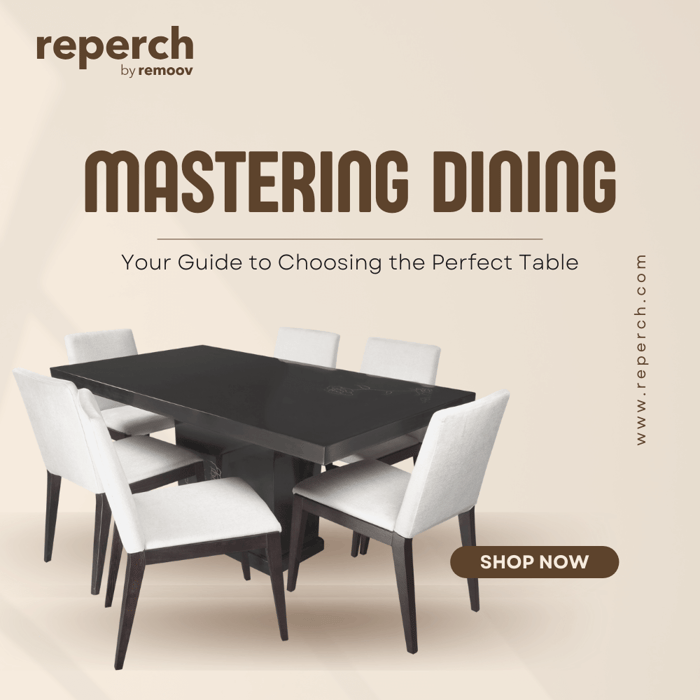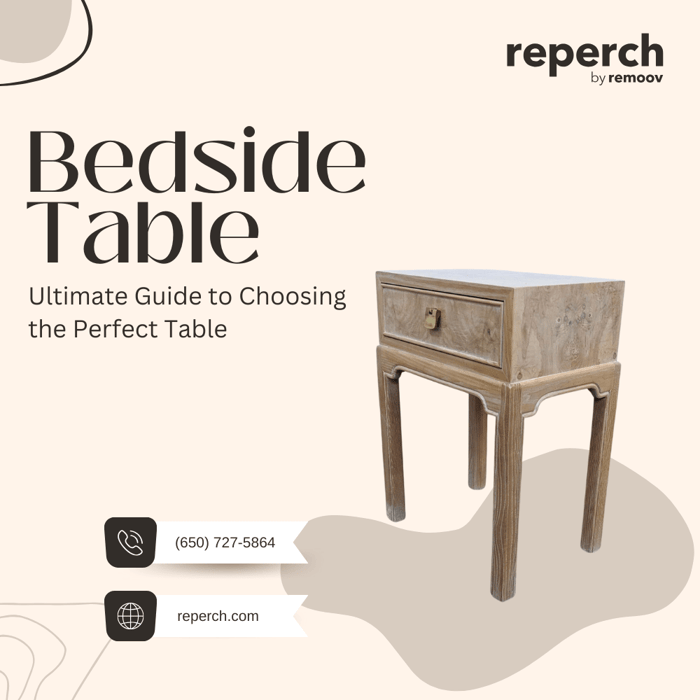The dining table is more than just a piece of furniture—it's the heart of your home, a gathering spot for meals, conversations, and special occasions. Choosing the perfect dining table is a significant decision that can enhance the functionality, style, and overall ambiance of your dining space. This guide will walk you through the essential considerations, from size and shape to material and style, to ensure that you find the ideal table for your home.
Understanding the Key Considerations
Before diving into specific options, it's important to consider the overall needs of your dining space. The right dining table should align with your lifestyle, accommodate your space, and match your aesthetic preferences. Here's a breakdown of the key factors to consider:
Size of the Dining Room: The size of your dining room or kitchen is crucial. The table should fit comfortably without making the space feel cramped. Allow at least 3 feet of clearance around the table for easy movement and to accommodate chairs.
Dining Room Style: Your dining table should complement the existing decor of your dining room. Whether your style is traditional, modern, Scandinavian, or rustic, the table should harmonize with the overall design theme.
Primary Use and Frequency: Consider how often you use the dining table and for what purpose. A table that sees daily use by the entire family needs to be sturdy and durable, while a table used only occasionally can prioritize style and design.
Determining the Right Size Dining Table
Selecting the right size for your dining table ensures comfort and functionality. To determine the appropriate size:
Measure the Room: Start by measuring the length and width of your dining space.
Allow Clearance: Subtract 6 feet from both the length and width to account for the necessary 3 feet of clearance on all sides.
Capacity: Choose a table that comfortably seats the number of people you typically host. For example, a 72-inch long rectangular table can seat six people, while a 96-inch table can accommodate eight.
Selecting the Ideal Table Shape
The shape of your dining table significantly impacts the room's functionality and aesthetic appeal:
Rectangular Tables: Ideal for larger spaces and formal settings, rectangular tables offer ample seating and surface area.
Round Tables: Perfect for smaller spaces, round tables promote intimate conversations and can fit comfortably in tight areas.
Square Tables: Best suited for square rooms, these tables provide a cozy, balanced feel.
Oval Tables: A versatile option that combines the benefits of rectangular and round tables, ideal for spaces that require a softer silhouette.
Exploring Materials for Dining Tables
The material of your dining table affects its durability, maintenance, and aesthetic appeal:
Wood: Timeless and versatile, wood is a popular choice for its natural beauty and durability. Options include hardwoods like oak, mahogany, and teak.
Glass: Ideal for modern spaces, glass tables create an open and airy feel but require regular cleaning to maintain their appearance.
Metal: Metal tables offer an industrial chic look and are extremely durable, though they may feel cold compared to other materials.
Marble: For a luxurious touch, marble tables are both elegant and durable but can be heavy and require maintenance to avoid stains.
Sintered Stone: A modern option that offers durability and a luxurious finish, requiring minimal maintenance.
Considering Table Style and Design
Your dining table should reflect your personal style and enhance your home decor:
Traditional: Heavy farmhouse tables with exposed wooden surfaces.
Classic: Pieces with distinctive elements like cabriole legs and embellishments.
Modern and Contemporary: Straight-edged forms made from wood, glass, or metal.
Industrial: Wood and metal combinations for a rugged, stylish look.
Scandinavian: Sleek, minimal designs with slim tops and angled legs.
Choosing the Perfect Table Color
The color of your dining table can influence the room's ambiance:
Light Neutrals: Colors like soft brown, gray, or white create an airy and open feel, ideal for casual settings.
Dark Neutrals: Shades like dark brown or black add a sense of formality and refinement, grounding the room's aesthetic.
Assessing Practicality and Maintenance
When selecting a dining table, consider its practicality for your lifestyle:
Durability: Opt for materials that can withstand daily use, especially if the table is a central piece in your home.
Maintenance: Consider the upkeep required for different materials. For instance, wood may need regular polishing, while glass needs frequent cleaning.
Where to Buy Dining Tables
Choosing the right supplier is crucial for a seamless buying experience:
Transparency: Look for suppliers who are transparent about their products and materials.
Customization: Opt for suppliers offering customization options to tailor the table to your specific needs.
Installation Services: Consider suppliers that provide installation services to ensure proper setup and peace of mind.
Conclusion
Choosing the perfect dining table involves balancing aesthetics, functionality, and practicality. By considering the size, shape, material, and style, you can select a table that not only enhances your dining space but also serves as a gathering place for cherished memories with loved ones. Whether you prefer the timeless appeal of wood, the modern touch of glass, or the elegance of marble, the right dining table is out there, waiting to become the heart of your home.
Explore more options and find the perfect dining table for your home at Reperch!








